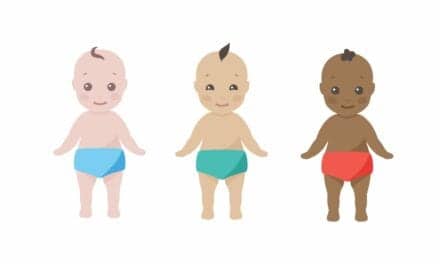A new study reports on how White and Black adolescents report their sleepiness after a night of restricted sleep.
Interview by Sree Roy
Black individuals underreport health concerns as compared with White individuals, and this underreporting extends to sleep concerns, finds a new study conducted by Caroline Watson, BA, Lindsay Stager, MA, and Aaron D. Fobian, PhD, of The University of Alabama at Birmingham.
“Given adolescents already represent a vulnerable population with regard for sleep, our research sought to identify racial disparities that may exacerbate sleep concerns among racial minority adolescents,” says Watson, who is in the university’s medical clinical psychology doctoral program.
Fifty-seven adolescents (56.1% Black, 43.9% White) completed two one-night sleep conditions: adequate sleep (mean of eight hours, 54 minutes) and restricted sleep (mean of four hours, 13 minutes). Following each actigraphy-confirmed condition, participants self-reported sleepiness using the Stanford Sleepiness Questionnaire. The study found White adolescents reported greater sleepiness following restricted sleep than Black adolescents.
“Continual shorter sleep duration among Black adolescents may contribute to habituation to symptoms of sleepiness,” Watson says.
What could this mean for healthcare clinicians? “Until culturally informed measures of sleep and sleep complaints are developed, healthcare providers in clinical settings may consider utilizing brief semi-structured interviews related to signs and symptoms of poor sleep and provide appropriate sleep hygiene recommendations based on the interview,” Watson says.
Watson discussed the study, presented at the Society of Behavioral Sleep Medicine’s 2023 5th Annual Scientific Conference in San Diego and pending publication in the Journal of Behavioral Sleep Medicine, with Sleep Review over email.

Despite similar sleep duration and efficiency, there was a difference in self-reported sleepiness. What factors do you believe contribute to this discrepancy?
One explanation may be due to habituation to symptoms of sleepiness, as Black adolescents have been found to experience significantly shorter sleep durations than White adolescents. These results may also be due to experiences of racism and associated medical mistrust. For example, among Black adults, salient experiences of racism have been found to contribute to the underreporting of physical and mental health concerns.
Could you discuss any potential limitations of the Stanford Sleepiness Questionnaire when used across different racial groups?
To my knowledge, research has yet to formally assess potential limitations of the Stanford Sleepiness Questionnaire across different racial groups. However, racial differences have been assessed in other measures of daytime sleepiness, and limitations related to sociocultural differences were found. Specifically, researchers found that increased scores on two items of the Epworth Sleepiness scale were responsible for overall increased sleepiness scores among Black adults. Researchers hypothesized that these differences may be due to different interpretations of items due to sociocultural differences and life experiences. Future research is needed to assess these potential limitations in the Stanford Sleepiness Questionnaire.
What are the implications for healthcare providers who are treating Black adolescents for sleep disturbances?
For one, it highlights the need for healthcare providers to educate patients on signs and symptoms that adequate sleep characteristics (eg, sleep duration, time in bed, wakefulness) are not being met. Until research clarifies the potential limitations of sleep-related measurements, healthcare providers may also consider adopting more descriptive interview techniques.
How do the results align with or differ from existing literature on sleep disparities among racial groups?
Our results contribute to a growing body of literature highlighting racial disparities in the underreporting of physical and mental health concern. Our results also support the need for further research aimed at addressing potential racial disparities among adolescents, as the majority of research has been conducted among adults.
How might this study influence future public health policies regarding adolescent sleep health and education?
Overall, our results highlight the presence of racial disparities in the underreporting of sleep concerns and contribute to a substantial body of literature that consistently supports the need for sleep health initiatives for adolescents. With regard for public health policies, our results support the need for sleep health educational programs and awareness campaigns.
Photo 115911900 © Diego Vito Cervo | Dreamstime.com





